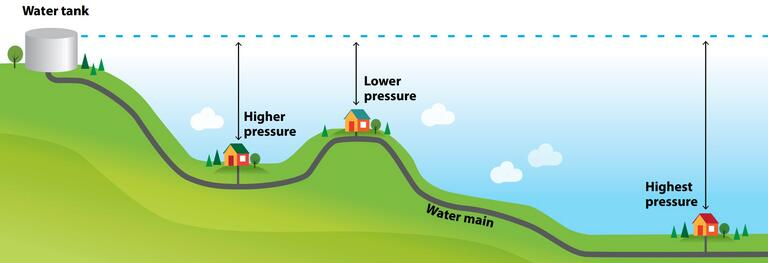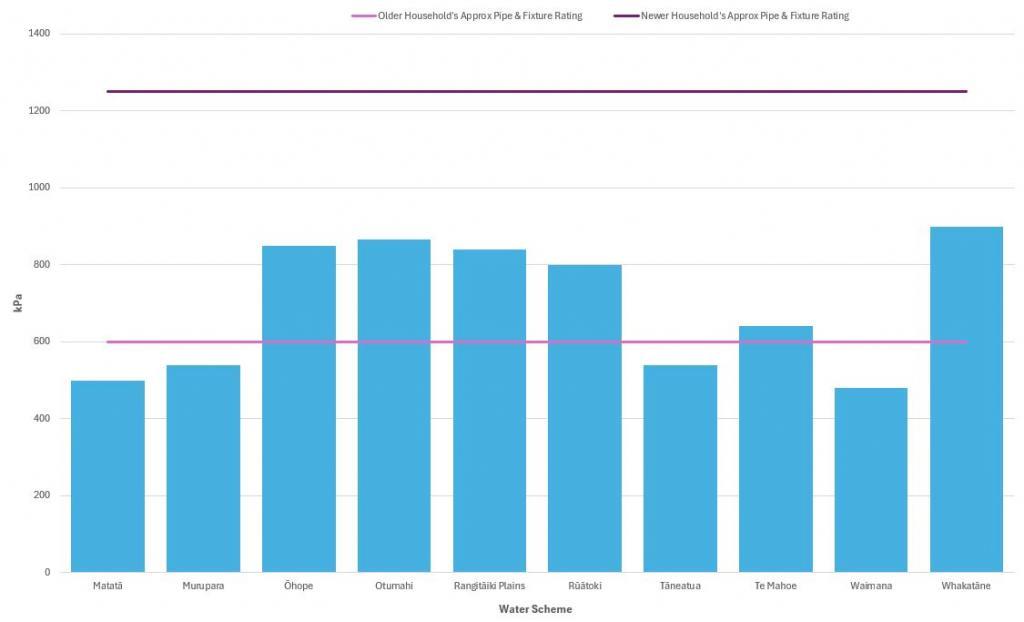The landscape around the Whakatāne District means water pressure can vary considerably across the district.
We aim to provide water at a pressure between 300kPa and 900kPa. Pressure below this level can be frustrating for customers but higher pressures, while giving a great shower can put additional stress on pipework and increase leakage.
If we use the Whakatāne water supply as an example, water is stored in tanks high up on the hill above Valley Road. This means the water pressure comes from a gravitational force pushing water down towards your home. The closer you are to sea level, the higher your water pressure will be, and vice-versa, if your house is higher up on the hill, your water pressure will be lower.

Image above is attributed to Portland.gov
Most older homes, constructed before the implementation of the NZ Building Code in 1992, feature water pipes with a rating of approximately 600kPa. This rating represents the maximum pressure the pipes can withstand when water is not in use (though pressure slightly decreases when water is flowing). Exceeding this pressure threshold could jeopardize the structural integrity of the pipes and fixtures, potentially leading to leaks.
The graph below shows the maximum water pressure across our water schemes vs the pressures older and newer household pipes and fixtures are rated to.

It is the consumer’s responsibility to ensure their household is using pipes and fixtures with the correct pressure rating to match the maximum pressure that will occur in your area.
When necessary, Council recommends additional protection in the form of a pressure reducing valve to the household’s water supply line near the property’s boundary if the pressure in your area is higher than what your pipes can handle.
A pressure reducing valve ensures your water supply will operate at a more favourable level and may extend the life of your pipes and fittings. It also offers some peace of mind if the history of your pipes is unknown or if you live in an older property.
Before installing anything, Council recommends seeking advice from a qualified plumber to assess your specific situation.
If a pressure reducing valve is installed, it is important to follow the manufacturer’s recommendation for this device. Generally, these valves require annual maintenance and replacement every 5-10 years, depending on maintenance adherence.